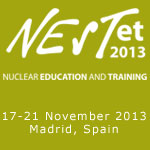

A Young Generation report on the ETRAP 2013 conference
The 5th international Conference on Education and Training in Radiation Protection (ETRAP) opened on 12 March 2013 at the Flemings Hotel in Vienna with a welcome reception.
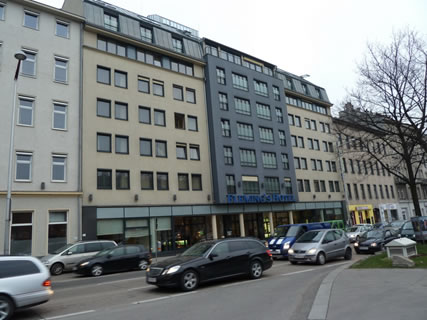
Education and training are the two basic pillars of any policy regarding safety at the workplace. Practitioners who work with radiation sources have a wide range of responsibilities and objectives depending on their work practices, but all will have a threefold common need:
-
The basic education and specific training that provides the required level of understanding of artificial and natural radiation and its management
-
Common standards for the recognition of skills and experience
-
An opportunity to refresh, update and test acquired knowledge and competence on a regular basis
These 3 key phrases were the leading messages frequently articulated throughout the conference, which was attended by over 130 participants from 37 countries. ETRAP has been organised for 14 years. It brings together all users and teachers active in the provision of education and training in the field of radiation protection.
Opening Session
The welcome speech was given by Michelle Coeck of SCK-CEN, who first thanked the organisers and presented the partners whose cooperation had made the conference possible. She also spoke about the main topics that would be presented during the conference, primarily reports about the current situation in countries and national networks, their new projects and ideas and an introduction to new and modern teaching methods and training tools.
A. Heffner, who represented the main organizer, Seibersdorf Laboratories, introduced the other opening session speakers. Ms. M.Schwaiger, from Seibersdorf Laboratories, began by presenting the honoured guests who were present and attended the first presentations. She spoke about the importance of education and training in the radiation protection sector, as reflected by the increased offer education and training opportunities has developed in recent years. She pointed out that three underlining principles are theory, education and training and refreshment of knowledge.
The second welcome address was given by V. Karg, from the Federal Minister of Agriculture, Forestry, Environment and Water Management of the Republic of Austria. After his address P. Soo Hahn, who spoke on behalf of the IAEA, briefly presented the IAEA’s mission with regards to the education and training sector.
The final welcome address was given by Professor E. Gallego, from the Universidad Politecnica in Madrid, who introduced IRPA and pointed out the importance of the stimulus and help provided by the Young Generation.
There then followed a number of presentations from key note speakers. The first one was from G. Simeonov, from the European Commission (EC). The EC is currently working on a revision of the Basic Safety Standards, which will bring together 5 related Directives and the EC’s Recommendation. The main reason for this is the new scientific findings that have emerged, the need to harmonise the legal framework and the experience that has been accumulated in the field of radiation protection. Mr. Simeonov gave a broad overview of current relevant EU legislation and showed what improvements are in the pipeline. One example is the revision of the status of the medical physics expert (MPE), the radiation protection expert (RPE), and the radiation protection officer (RPO).
The second keynote speaker was A. Luciani, from the IAEA, who spoke about the Agency’s role in education and training. He emphasised that a national strategy is essential for achieving good overall standards. He introduced the Regional Training Centres (RTCs), which are essential for this process and will help the Member States with the application of these standards. The strategic approach of the Agency centres around a long-term project (2011-2020) to promote the objective of having the standards applied in all Member States by the end of that period.
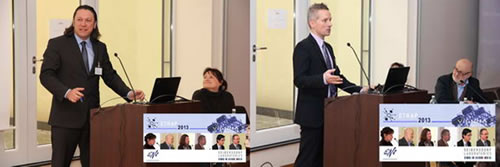
Harmonization of terminologies and definitions
The first technical session of the conference was dedicated to harmonization. Mrs. M. Schwaiger, from Seibersdorf Laboratories, chaired the session, which featured five presentations. First up was R. Van Wezel, who presented the EC’s ECVET (European Credit system for Vocational Education and Training) scheme. He introduced the scheme, which should provide in the near future an easy tool for delivering education and training throughout Europe. It will make it easier to promote life-long learning, transparency, mobility and permeability.
Mr. H.Buurveld then outlined recent developments in the work carried out by the ENETRAP II Working Group 5, which has developed an easier-to-use tool for comparing courses and training provided in the field of radiation protection. He illustrated a four-level validation measurement that is used in the Netherlands and provides a rating scale ranging from 0 (no awareness) to 3 (detailed understanding). As there is a broad range of topics covered by protection not every trained person needs a minimum 3 rating in all levels. This system can be used before the ECVET comes into operation.
The third presentation of the session was given by Mr. Boersma, who highlighted a comparative study that has been carried out in the Netherlands and Germany on low-level RP training. Most people are trained only to a low basic level, and the report maintains that it should be possible to compare the different training possibilities available. The outcome of the study was that the training provided is equivalent in both countries, despite very different national legislation, and that the only difference is that practical experience is obligatory in Germany.
Before the lunch break two more presentations were given, the first by P Livolsi, who introduced establishment the ECVET approach for RPE training. The last speaker in the session was C.J. Caruana, who spoke about the training of medical radiation protection experts (MRPE). The aim is, as with all harmonisation projects, to facilitate the mobility of MRPEs and to be able to compare the different curricula in Europe.
Efficiency and effectiveness of training
This first afternoon session started with a presentation from Mrs. Z.H.Amador Baldona, who described the situation in Cuba. She explained a safety performance indicator, which is a link between the dose, the number of incidents and the number of workers. As a result of it they were able to reduce this indicator drastically by ensuring that the personnel had the appropriate training.
The second and final presentation, which was given in the absence of L. McCarthy, was from G. Neuwirth, from the Seibersdorf Laboratories. He introduced Austria’s RP training programme, showing the different opportunities that it provides for all kinds of users. He also explained the system of awarding medals for the successful completion of additional courses. This system was tailored to all users coming from the police, fire brigade or military and is very popular.
These two presentations were followed by a short panel discussion, which was moderated by the session chairmen - R. Paynter and A. Luciani.
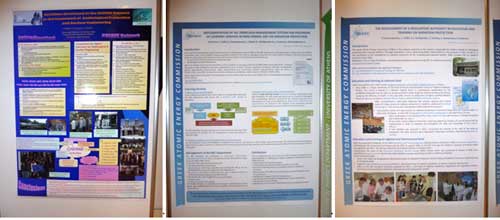
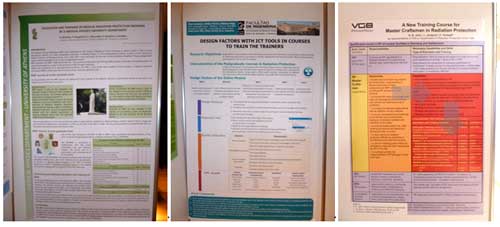
(Inter)national collaborations and networks, (inter)regional approaches and collaborations
Mrs. S. Kodlulovich kicked off this new session by giving an overview of Medical Physics Education and Training programmes in Latin America. The National Commission for Nuclear Energy launched a survey to get an overview of the training on offer there and of the current situation regarding the employment of Medical Physics. She showed the shortcomings that exist in the programme, for example the ratio between MPs and the number of facilities is quite bad. She also pointed out that the legislation needed to change this issue is often lacking, so there is neither the legal requirement for having MPs at facilities nor the E&T provided for those who are employed there.
Mrs. B.Nasri gave an introduction to the regional training center in Morocco. The concept of regional centres had already been introduced by A. Luciani. This was followed by a speech from F. Hoyler, who outlined the SARA programme. With the help of this programme students are able to gain access more easily to facilties for practical training in RP. The programme was developed by the CHERNE network and is a project being run by 10 institutions in 5 countries.
In the part of the session dedicated to regional training centres, which was chaired by J. Wheatley and E. Gallago, P. Dimitrou showed how they work in Greece. Mrs. A. Schmidt-Hannig outlined the latest outcomes of the Working Group 3 of the ENNTRAP II, which focuses on European guidelines for RPO training.
The final speaker in this session was Mrs. M. Marco, who explained the future potential of a new database, produced by ENENTRAP II, which should hopefully be in operation by this summer. She said that this project would only work if all training facilities updated their information about ongoing events.
Thursday
Qualification, accreditation & certification I
The first morning session was chaired jointly by G.Simeonov, together with Mrs. Schmidt- Hannig. They introduced Mrs. O.K.Hakam, who spoke about the current Masters in RP course that is offered in Morocco. She explained the main reason for the establishment of this university course is because of the number of medical facilities that exist in Morocco. The country has 16 radiotherapy stations, 2 cyclotrons and one research reactor. The course, which also includes a mandatory internship of 5 months, is the result of a successful collaboration between different universities. Each year they have between 220 and 230 applicants. Only 10% of them, however, are chosen as suitable candidates for completing the Masters programme.
The next two presentations were dedicated to the UK and its Radioactive Waste Advisors (RWA). First up, Mrs. A. Wright spoke about the implementation of a nationwide RWA programme, which is quite difficult to manage because of the different kind of regulators operating across the country. The implementation of the programme started 10 years ago. The most difficult part was to persuade the nuclear industry to accept these new experts. They wanted to have a pool of experts from which they could choose according to their specific needs.
R. Paynter then gave an insight into the development of a recognition system for the RWAs. In the UK this system only exists for RP Advisers and Medical Physics, but not for RWAs, which is necessary in view of the above-mentioned developments.
The last speaker of this morning session was Mrs. R.D.Silkoset, wo illustrated how the E&T system for Medical Physics in RP in Norway works.
Qualification, accreditation & certification II
The second morning session was chaired by O.Guzman and H.-F. Boersma. It began with Mr. P.Dimitriou, who gave an overview about the establishment of a national strategy for E&T in RP. He was followed by Mrs. J. Stewart. She spoke about the recognition of RPEs, which was also a project of the ENENTRAP II. R.Elek then explained how the Hungarian RP training system is structured. In Hungary there is a basic level of education provided, mainly for workers in NPPs, and there is also a higher level with specialisation in specific areas, such as radiology or industrial applications.
S-G Jahn then presented the changes that have taken place within the Swiss regulatory system, principally how the RP and E&T programme have been under development for the past two years. The final presentation in the session had to be cancelled, and after the lunch break a poster session followed. Over 30 posters were presented, with the topics featured ranging from national strategies to specific examples in the E&T sector or new learning tools that have been developed in recent years.
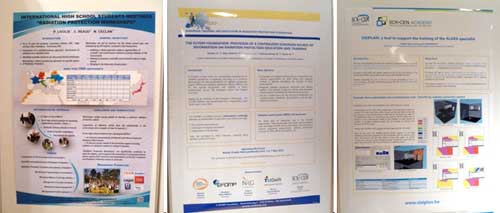
Sector specific training needs I
The programme for the first afternoon session was changed a little, and the presentation of A. Timoshenkos was brought forward. Mr. Timoshenko reported on the status of E&T in Belarus, which is currently undergoing big changes. His report was then followed by K. Fornalski, who spoke about RP training in Poland, which is a very important issue for this “nuclear newcomer”.
The next session was chaired by C. Caruana and Mrs. J. Stewart, who introduced the speaker, Mrs. R. Fannin. She gave a remarkable talk about training needs in the veterinarian sector. She showed examples of incidents that have occurred during X-ray diagnostics and outlined the main issues related to taking X-rays of animals. These included, e.g., the question of who is able to pacify the animal? If it is the owner then he/she can potentially be exposed to radiation. Then there is the question of sedation, which may not be the best option for the animal. Another issue is poor working practices and the lack of time and willingness to undergo effective training.
As two presentations were cancelled in this session, there were the only 3 speakers dealing with the first part of the topic.
Sector specific training needs II
Mrs. Stewart started the next session with an overview of radiation safety training for emergency responders. Scenarios where emergency responders can be trained with simulated dose rate readings were analysed. The main aim is to teach them how to use correct wording - micro or milisieverts can make a big difference. Also discussed was an assignment that was requested by the stakeholders in the project.
The second talk was given by S. Schönhacker, who showed how police forces and military services are trained in RP in Austria. The most outstanding course that should be mentioned here is the aeroradiometry course, which is a course for officers at the highest level and is a useful tool to use when handling a large contamination scenario in Austria.
Mrs. Shauna was the next presenter in the session, which was chaired by M. Schouwenburg and G. Genard. Mrs. Shauna talked about a subject that had not yet been touched upon during the conference - NORM awareness training. She works with oil and gas workers in the US, and also does research in the area. She said that the workers are not aware of the processes, and that continuous training is necessary, also because of the sometimes quite high dose rate present in sludge deposits (up to 20µSv/h). One huge problem is that the workers do not carry their dosimeters.
She was followed by Mrs. M.Kinker, who gave a report on the lessons learned from the training courses in waste management in 2010 and 2011.
The final speaker was Mrs. K.Holmberg, who highlighted RP training performed in Finland, which is mainly done with the use of videos. The Nordic countries have tried to develop a system that can be used in all countries, so that it is easier for workers to move from one country to the other.
In the evening the conference dinner took place at a traditional Austrian “Heurigen” and proved very popular.
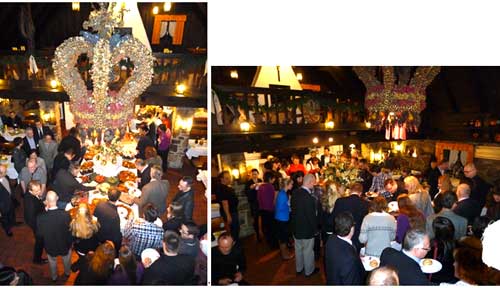
Friday
Tools and resources, methods of delivery, introduction of modern learning tools
Chaired by Mr. S. Landsberger and M.Marco, this session started with a presentation from P.Massiot. He presented a report from the ENENTRAP II Working Group 7, which focused on the use of a textbook and a cyberbook as useful training tools. The books will be made available for everybody.
The second speaker was Mrs. A. Paulenova, who highlighted the webinars organised by Oregon State Univeristy. The E-Campus concept has been a great success, mainly for people who are working in full time jobs. Indeed, all but 2 of the available courses in their curriculum can be taken as an e-course. Mrs. Paulenova stated though that the webinars demanded more teacher-to-student contact, as often students call, ask for skype conferences or mail messages. She also mentioned that they started organising these webinars because there is a huge lack of radiochemists in the US.
A serious 3-D game was the title of the last presentation in this session. Mr. A.Pin introduced a tool that has been developed for RP training purposes. The CEA simulated certain possible scenarios that might occur in a reactor and the user had to decide how to react, interact and perform his/her duties. The various scenarios included different measuring devices, threat situations and interactive tools.
Public information
The topic for this session gave rise to two 2 presentations. It was chaired by Mrs. G. Tudor and Mrs. K.Huitema. The first talk, given by A. Marsh, was about undergraduate-level RP education in the UK and primarily showed the course that is offered by the University of Cumbria. The second presentation was by S. Landsberger, who introduced on-line graduate courses in health physics and radioactive waste management. He showed the different delivery formats that exist, such as blackboards, smartboards and video conferences.
Addressing more directly the topic of public information was J.Sabol, who spoke about the issue of how to inform the public about radiation exposure. He drew his conclusions from his teaching of medical students and paramedics. The main lesson he highlighted is the need to speak to people in layman’s language. They need to understand whether or not there is a real threat to their lives.
The final presentation was given by Mrs. K. Huitema. She showed how to develop an excellent video in order to inform the public about radiation. It is an interactive tool accessible for everybody and easily understandable. The main reason for developing this tool was the Fukushima crisis, and the fact that no easily understandable data was found.
Introduction to ethics in education and training for radiation protection
This session, chaired by Mr. G. Meskens, was followed by a panel discussion on the topic of ethics in RP training. Mr. Meskens gave a short introductory presentation on the topic of ethics and risk, and their interaction. Our decisions, he underlined, are either based on knowledge or on values we can rely on. The latter is a problem in the RP area as we cannot always safely rely on any set of values.
The first presentation was given by H. Janssens, who spoke about the training provided by the CHERNE Network. The second presentation was given by M.Koželj. He attempted to define the separation that exists between professional education and RP training. He explained how course participants would often come armed with the wrong expectations.
The future of education and training in radiation protection
The joint Chairwomen of this session were Mrs. A.Schmitt-Hannig and with Mrs. J.Stewart. The first talk given was on the new Eratom programme (Horizon 2020), in which all stakeholders should be involved. It was given by G. van Goethem. The second presentation was from V.Smith, who introduced a new initiative called DoReMi that is aimed at providing training in low-dose radiation research, an area where many countries have lost key competences and skills.
C. Caracuna then gave a short introduction to MEDRAPET, as Mr. Damilakis was not available. P.Livolsi then showed the success of international high school student meetings at RP workshops. These workshops were led by teachers and RPEs.
The final presentation was given by Mrs. Stewart, who spoke about the Young Generation Initiative called SRP.
This final session was followed by a panel discussion, which addressed the topic of ongoing and future initiatives at EU-level and international level and crosscutting initiatives. There was a general agreement on the issue that ethical considerations should be included in future E&T discussions and in curricula. One very important point seems to be the definition of what exactly is a safe level of radiation. Another important point mentioned was that the education of children when it comes to radiation should start as early as possible.
Mrs. Coeck gave and R.Paynter then concluded the conference by giving a short summary of proceedings and finished by once again thanking all the conference sponsors and contributors.
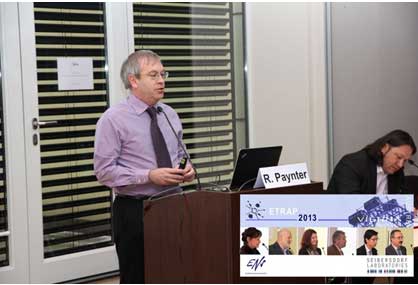
The ETRAP conference provided a unique opportunity to gather together many experts in the field of RP education and training from around the world to exchange ideas, present the latest developments and network on possible future projects.
We would like to thank the organisers for giving us the opportunity to attend the conference as Young Generation reporters.
Eileen Radde
Renate Reininger
ÖKTG |

